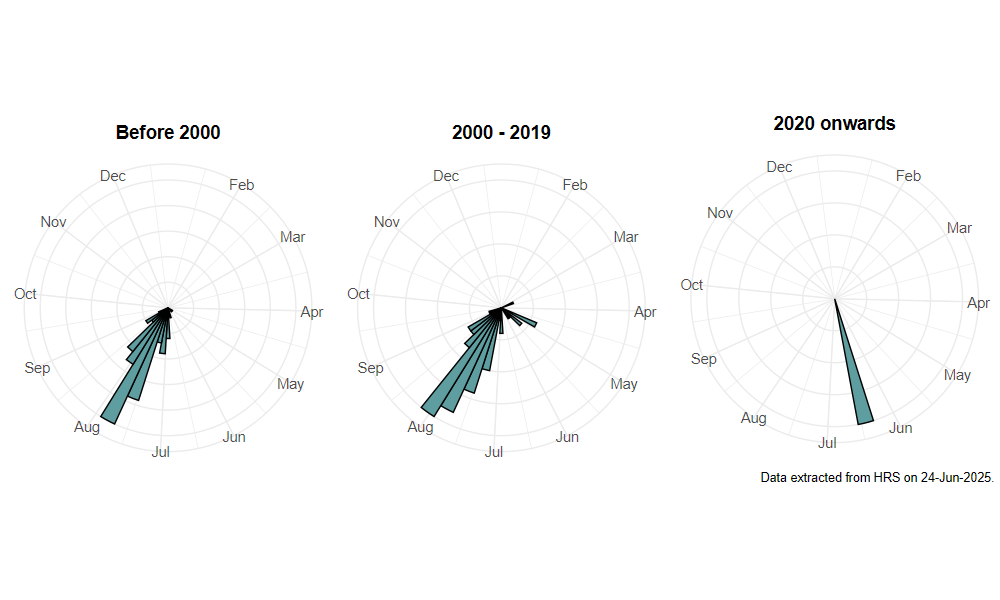Cheilosia velutina Loew, 1840
Identification
Identification difficulty = 3. ![]()
![]() according to Ball & Morris, 20241
according to Ball & Morris, 20241
Biology
The larval host is given as Figwort Scrophularia nodosa by Brischke (1880)2 but Speight (2017)3 quotes an American reference, according to which it tunnels the stems of Marsh Thistle Cirsium palustre. This is a very poorly-understood species whose habitat requirements are difficult to define. It is most frequently found in mid to late summer amongst a profusion of its close relative, C. proxima, at the flowers of umbels such as Wild Parsnip Pastinaca sativa.
Flight period
The following plots show the number of unique records per week excluding those reported to be of immature stages.

Status
Lower Risk (Nationallly scarce) - Ball & Morris, 20144. Notable - Falk, 19915. Rare (RDB3) - Shirt, 19876.
Distribution
This species remains poorly known with very few confirmed records, mainly on the eastern side of Britain, including a recent one from near Edinburgh. It is perhaps most likely to be found where there is a profusion of C. proxima; checking a large number of specimens of this common species is essential if C. velutina is to be recorded.

Trends
The following plots show the Frescalo TFactor vs year and a map of the rescaled frequency (all records) for the species.
-
Ball, S., & Morris, R. (2024). Hoverflies of Britain and Ireland. WILDGuides (3rd ed.). Oxford: Princeton University Press. ↩
-
Brischke, C. (1880). Ueber Fliegenmaden aus Scrophularia nodosa u. Pteris aquilina. Entomologische Nachrichten Berlin, 6, 56. ↩
-
Speight, M. (2017). Species accounts of European Syrphidae ( No. 97). yrph the Net, the database of European Syrphidae (Diptera) (p. 294). Dublin: Syrph the Net publications. Retrieved from https://pollinators.ie/wordpress/wp-content/uploads/2018/05/StN-2017-Species-Accounts.pdf ↩
-
Ball, S., & Morris, R. (2014). A review of the scarce and threatened flies of Great Britain. Part 6: Syrphidae. ( No. 9). Species status (pp. 1–130). Peterborough: JNCC. ↩
-
Falk, S. (1991). A review of the scarce and threatened flies of Great Britain. ( No. 39). Research and Survey in Nature Conservation (pp. 1–194). Peterborough: NCC. ↩
-
Shirt, D. (Ed.). (1987). Red Data Books: 2. Insects. Peterborough: NCC. ↩